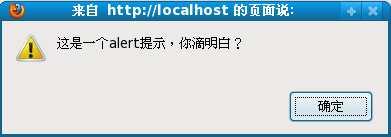|
|
復(fù)制代碼 代碼如下:
// 等價(jià)于 var foo = new Array(1, 56, 34, 12);
var arr = [1, 56, 34, 12];
console.log(arr.constructor === Array); // true
// 等價(jià)于 var foo = new Function();
var Foo = function() { };
console.log(Foo.constructor === Function); // true
// 由構(gòu)造函數(shù)實(shí)例化一個(gè)obj對(duì)象
var obj = new Foo();
console.log(obj.constructor === Foo); // true
// 將上面兩段代碼合起來,就得到下面的結(jié)論
console.log(obj.constructor.constructor === Function); // true
但是當(dāng)constructor遇到prototype時(shí),有趣的事情就發(fā)生了。
我們知道每個(gè)函數(shù)都有一個(gè)默認(rèn)的屬性prototype,而這個(gè)prototype的constructor默認(rèn)指向這個(gè)函數(shù)。如下例所示:
復(fù)制代碼 代碼如下:
function Person(name) {
this.name = name;
};
Person.prototype.getName = function() {
return this.name;
};
var p = new Person("ZhangSan");
console.log(p.constructor === Person); // true
console.log(Person.prototype.constructor === Person); // true
// 將上兩行代碼合并就得到如下結(jié)果
console.log(p.constructor.prototype.constructor === Person); // true
當(dāng)時(shí)當(dāng)我們重新定義函數(shù)的prototype時(shí)(注意:和上例的區(qū)別,這里不是修改而是覆蓋),constructor屬性的行為就有點(diǎn)奇怪了,如下示例:
復(fù)制代碼 代碼如下:
function Person(name) {
this.name = name;
};
Person.prototype = {
getName: function() {
return this.name;
}
};
var p = new Person("ZhangSan");
console.log(p.constructor === Person); // false
console.log(Person.prototype.constructor === Person); // false
console.log(p.constructor.prototype.constructor === Person); // false
為什么呢?
原來是因?yàn)楦采wPerson.prototype時(shí),等價(jià)于進(jìn)行如下代碼操作:
復(fù)制代碼 代碼如下:
Person.prototype = new Object({
getName: function() {
return this.name;
}
});
而constructor屬性始終指向創(chuàng)建自身的構(gòu)造函數(shù),所以此時(shí)Person.prototype.constructor === Object,即是:
復(fù)制代碼 代碼如下:
function Person(name) {
this.name = name;
};
Person.prototype = {
getName: function() {
return this.name;
}
};
var p = new Person("ZhangSan");
console.log(p.constructor === Object); // true
console.log(Person.prototype.constructor === Object); // true
console.log(p.constructor.prototype.constructor === Object); // true
怎么修正這種問題呢?方法也很簡單,重新覆蓋Person.prototype.constructor即可:
復(fù)制代碼 代碼如下:
function Person(name) {
this.name = name;
};
Person.prototype = new Object({
getName: function() {
return this.name;
}
});
Person.prototype.constructor = Person;
var p = new Person("ZhangSan");
console.log(p.constructor === Person); // true
console.log(Person.prototype.constructor === Person); // true
console.log(p.constructor.prototype.constructor === Person); // true
JavaScript技術(shù):JavaScript類和繼承 constructor屬性,轉(zhuǎn)載需保留來源!
鄭重聲明:本文版權(quán)歸原作者所有,轉(zhuǎn)載文章僅為傳播更多信息之目的,如作者信息標(biāo)記有誤,請(qǐng)第一時(shí)間聯(lián)系我們修改或刪除,多謝。



